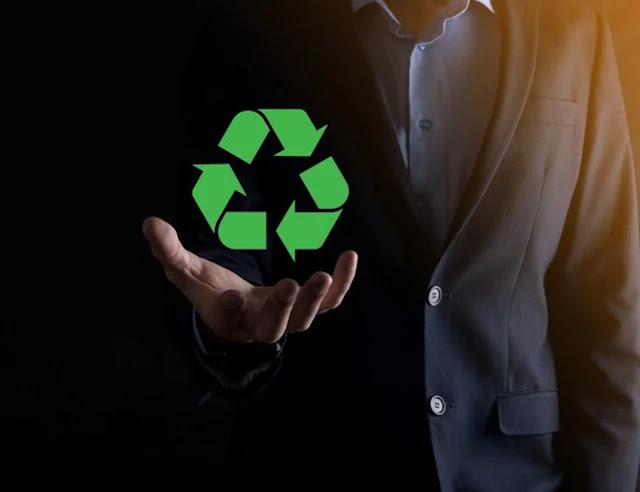Know About the Effective Recycling Process and Benefits
Picture this: You're rummaging through your attic and stumble upon a box of old VHS tapes gathering dust. Nostalgia hits you hard, but you're also aware that VHS tapes are a relic of the past. So, what do you do with them? Toss them in the trash?
Not! In an age where sustainability is key, repurposing things is another way to recycle, giving new life to what might otherwise be waste. In this article, we will shed light on the recycling process, discuss its benefits, and offer tips on how to do it effectively.

The Recycling Process Explained
Recycling is a multi-step process that involves collecting, processing, and converting waste materials into new products. It involves several stages, from collection to the creation of new products. Here's an outline of the recycling procedure:
Collection: The 1st step is the group of recyclable materials. This can be done through curbside collection programs, drop-off centers, or recycling bins in public places. Different types of materials, such as paper, plastics, glass, metals, and electronics, are typically collected separately to facilitate the recycling process.
Sorting: Once collected, the recyclables are taken to a recycling facility where they undergo sorting. Sorting can be done manually or mechanically. Manual sorting involves workers separating different materials, while mechanical sorting utilizes machines and technologies such as conveyor belts, magnets, screens, and optical scanners to separate materials based on their properties.
Cleaning and Preparation: After sorting, the materials may need to be cleaned and prepared for recycling. For example, paper and cardboard may go through a cleaning process to remove contaminants like ink or adhesive. Plastics may be shredded or melted to remove labels, and metals may be crushed or melted to remove impurities.
Processing: Once the materials are cleaned and prepared, they are processed according to their specific recycling requirements. Different materials have different recycling processes. Here are a few examples:
Paper: The paper is shredded and mixed with water to create pulp. The pulp is cleaned, refined, and turned into new paper products.
Plastics: Plastics are typically sorted by type and melted down to form pellets or flakes. These pellets or flakes can be used to create new plastic products.
Glass: Glass is crushed into little pieces named cullet. The cullet is then melted, molded, and cooled to create new glass products.
Metals: Metals like aluminum and steel are melted and refined to remove impurities. The molten metal is then shaped into fresh products.
Manufacturing: Once the recycled materials have been processed, they manufacture new products. For example, recycled paper can make newspapers, cardboard, or tissue paper. Recycled plastics can produce plastic bottles, containers, or textiles. The manufacturing process may vary depending on the type of material and the specific product being made.
Distribution and Consumption: The new products made from recycled materials are distributed and consumed by the public. These products can be recycled again, completing the recycling loop.
Benefits of Recycling
Environmental Conservation: Recycling helps in reducing pollution, as it decreases the amount of waste that ends up in landfills or incinerators.
Resource Efficiency: Recycling promotes the efficient use of resources. For instance, converting videotapes to a digital format ensures the content is preserved, eliminating the need to produce new material.
Economic Benefits: Recycling can create job opportunities in collecting, processing, and selling recycled materials. Additionally, it can be a cost-effective way of obtaining materials for arts and crafts.
Inspires Creativity: Recycling, especially upcycling, challenges one's creativity. Transforming something considered waste into something valuable or decorative is an art in itself.
Tips for Effective Recycling
Know What Can be Recycled: Educate yourself on the materials that can be recycled. For example, besides repurposing old VHS tapes, items like glass, paper, and certain plastics can be recycled.
Think Beyond the Bin: Recycling isn't just about tossing items in a recycling bin. Think about how items can be reused or repurposed. Old VHS tapes, for instance, can be turned into trendy coasters, pencil holders, or even funky retro purses.
Utilize Available Technology: To convert content from old tapes or other media, use available technology like digital converters. This is particularly helpful for converting VHS without a VCR, allowing you to preserve cherished memories in a modern format.
Involve Your Community: Encourage friends, family, and neighbors to participate in recycling efforts. Share ideas on repurposing items and host craft sessions to turn waste into wonders together.
Conclusion
Recycling is not just an environmental responsibility; it's an opportunity to innovate and create. Through effective recycling practices, not only can we contribute to environmental conservation and resource efficiency, but we can also unleash our creativity and bring communities together. The next time you find something that seems like a waste, think again; there might be another way to recycle.

No comments